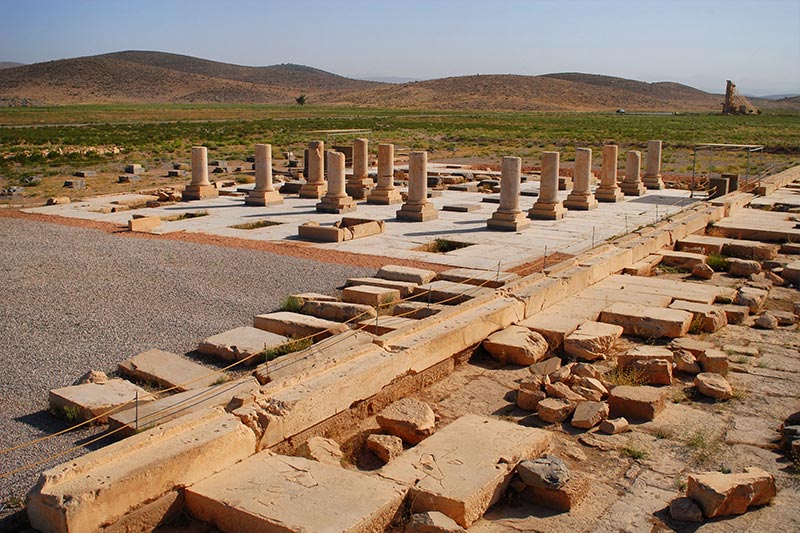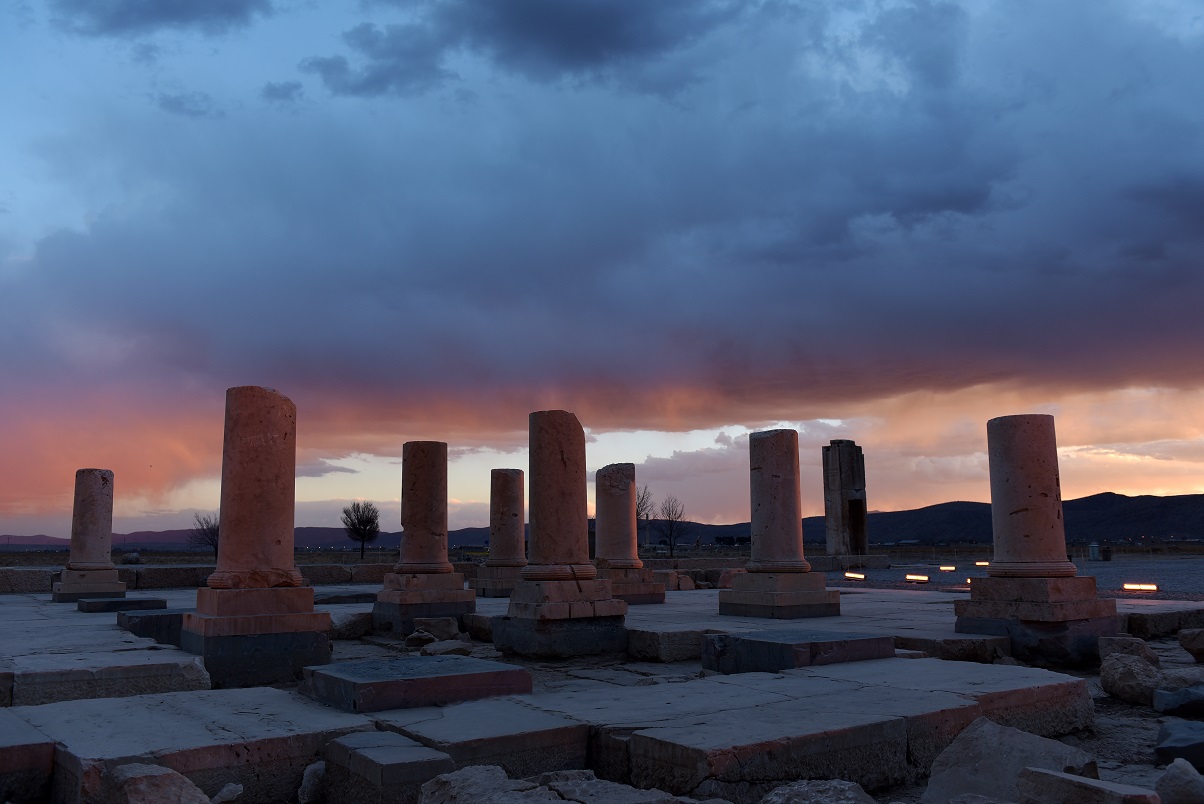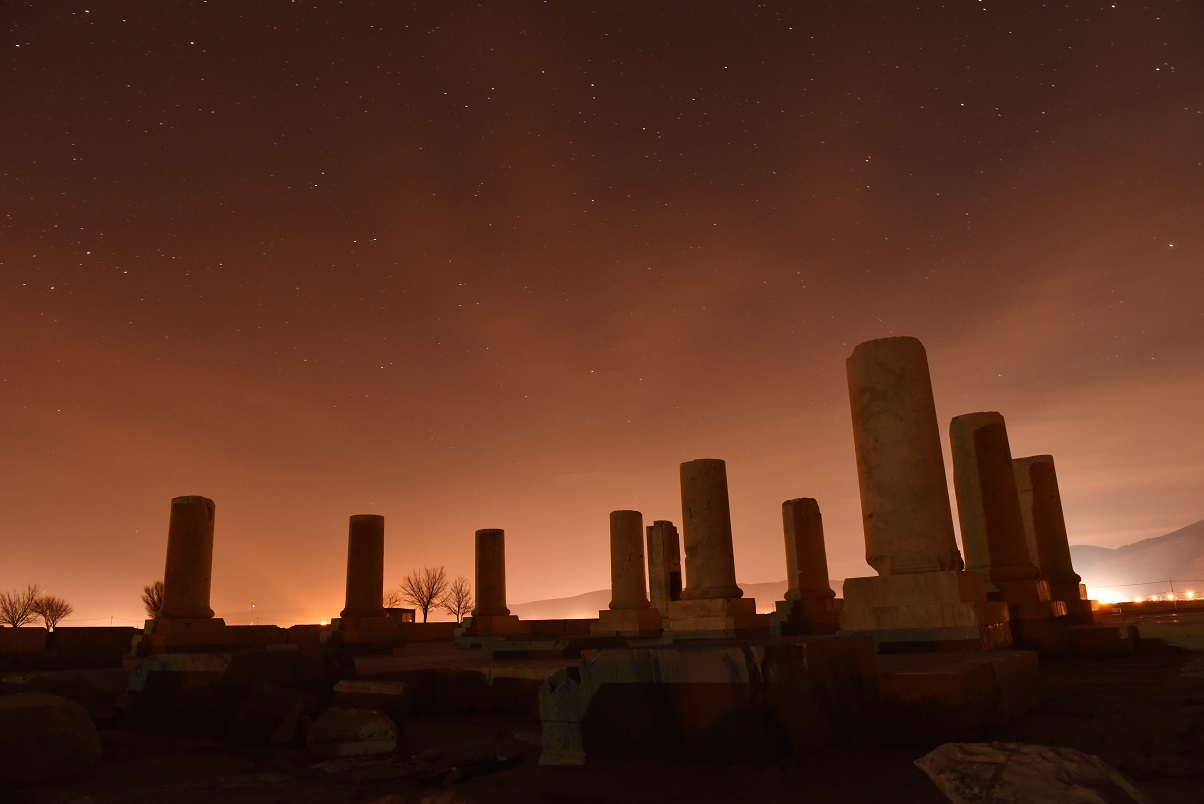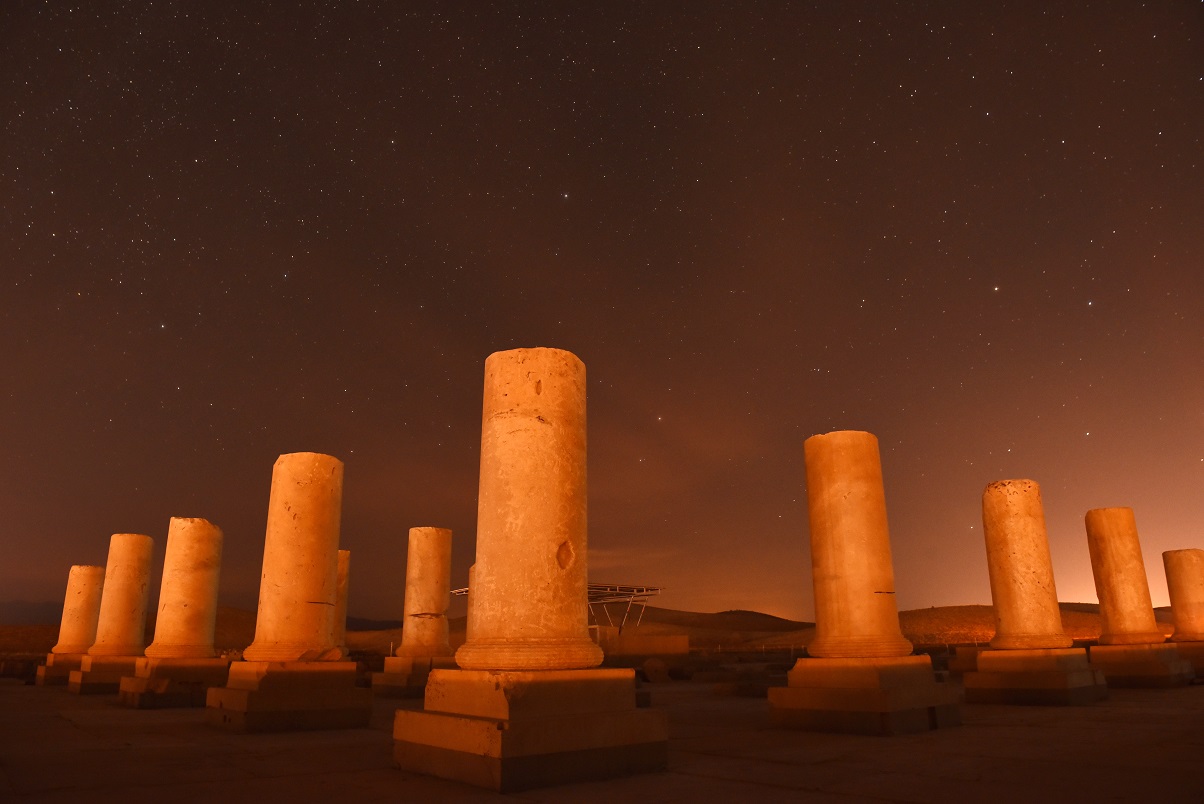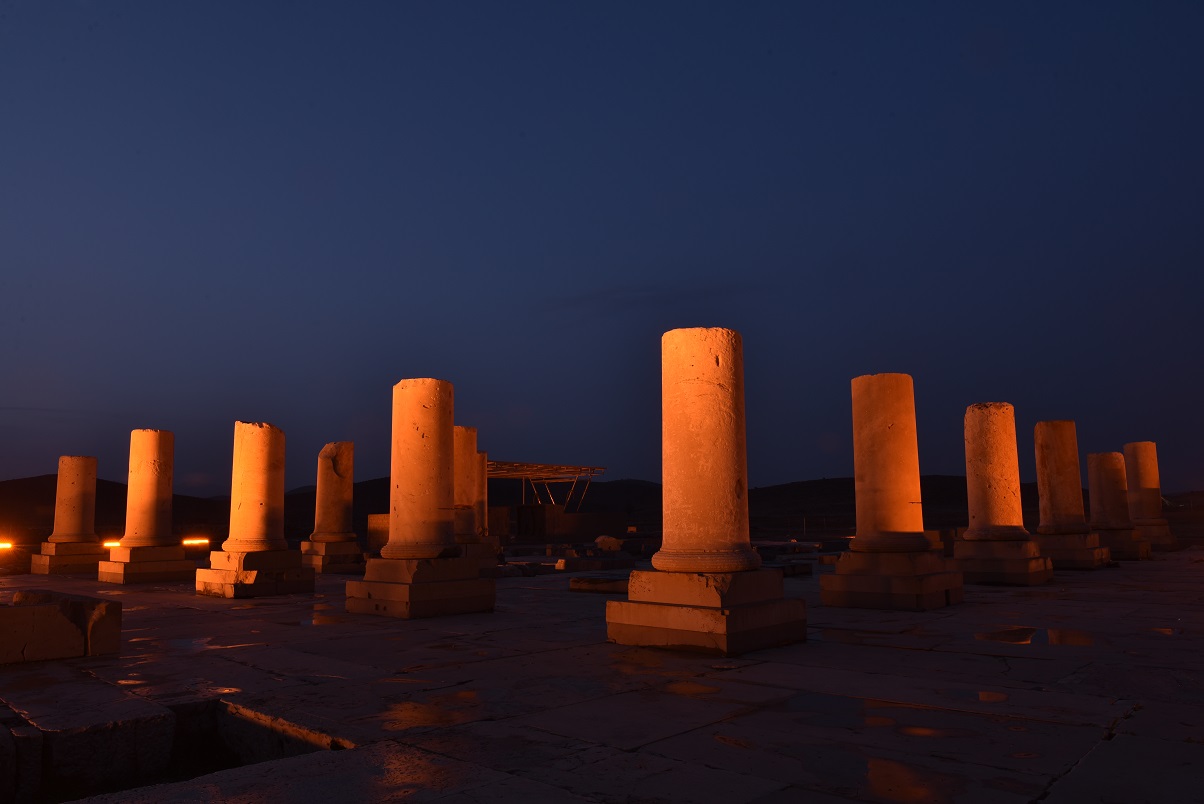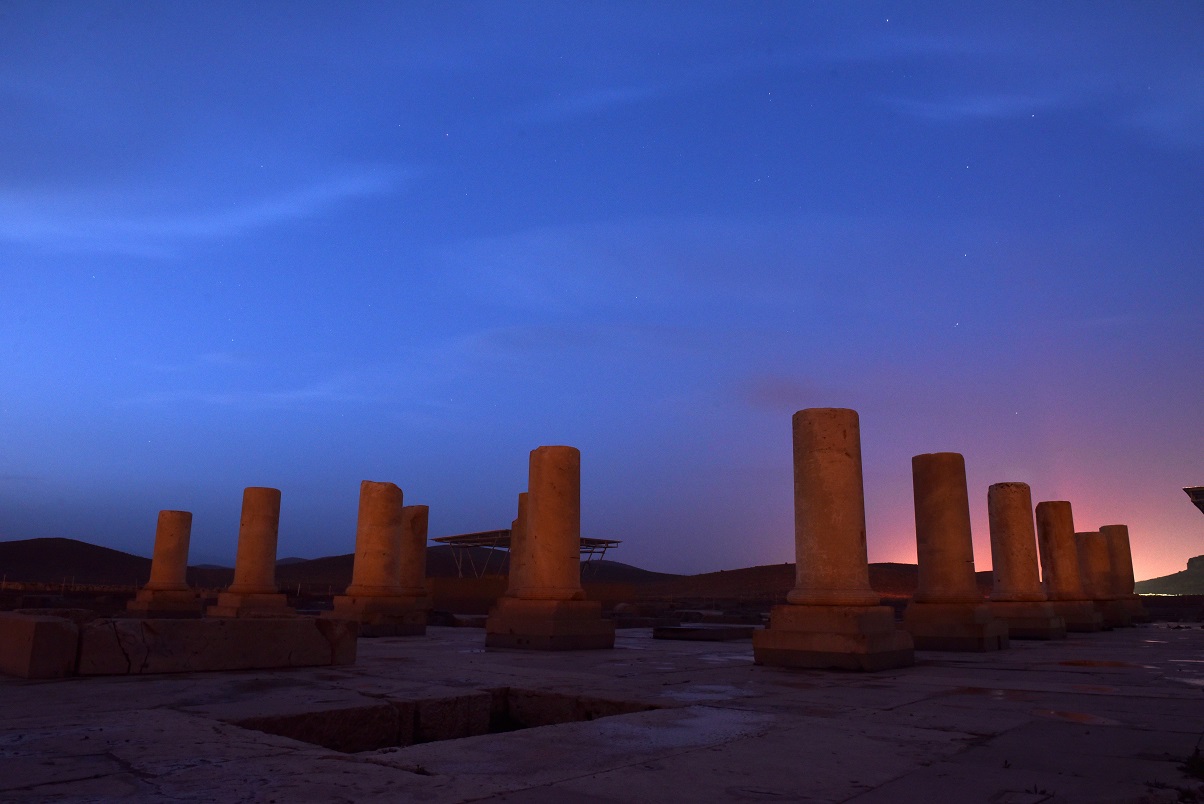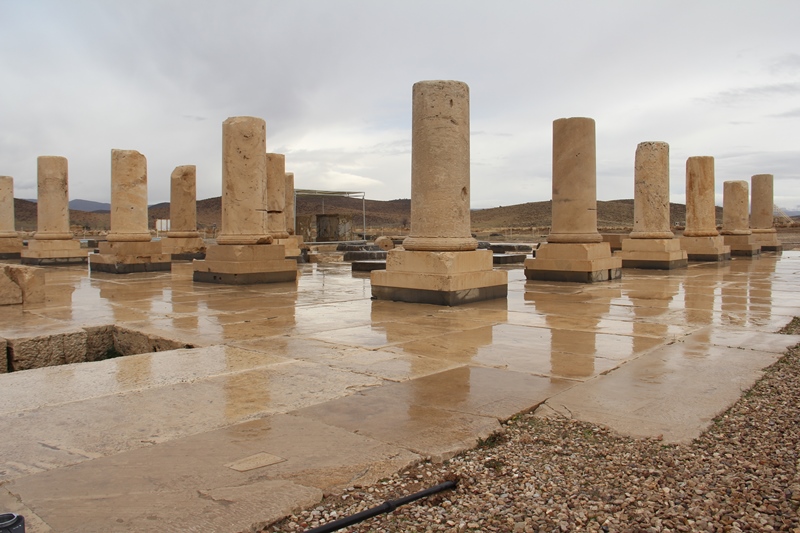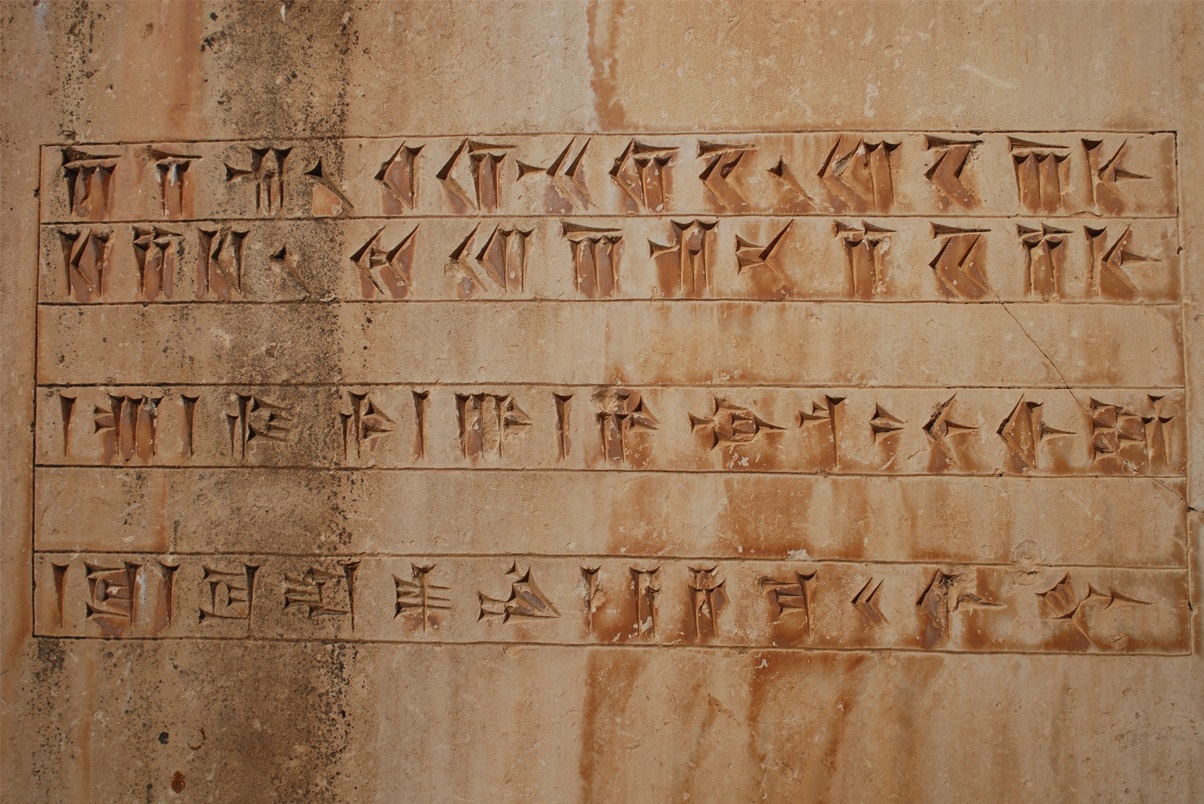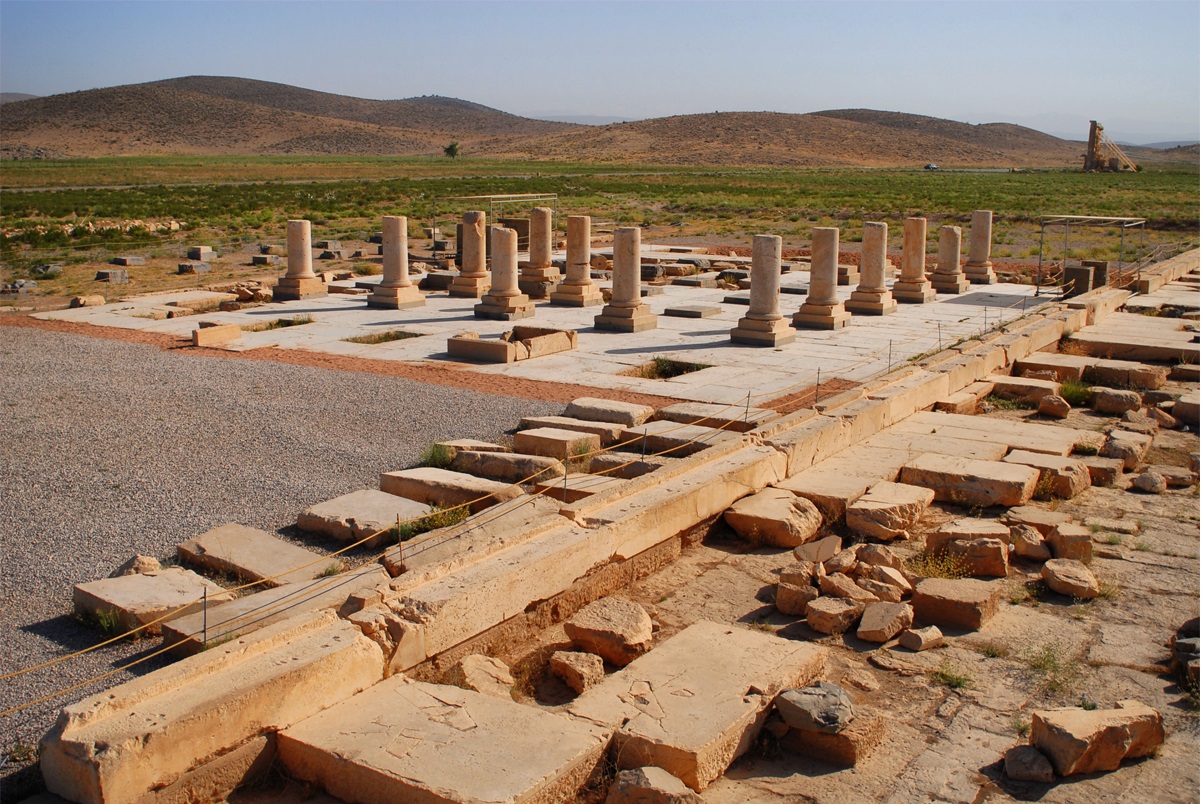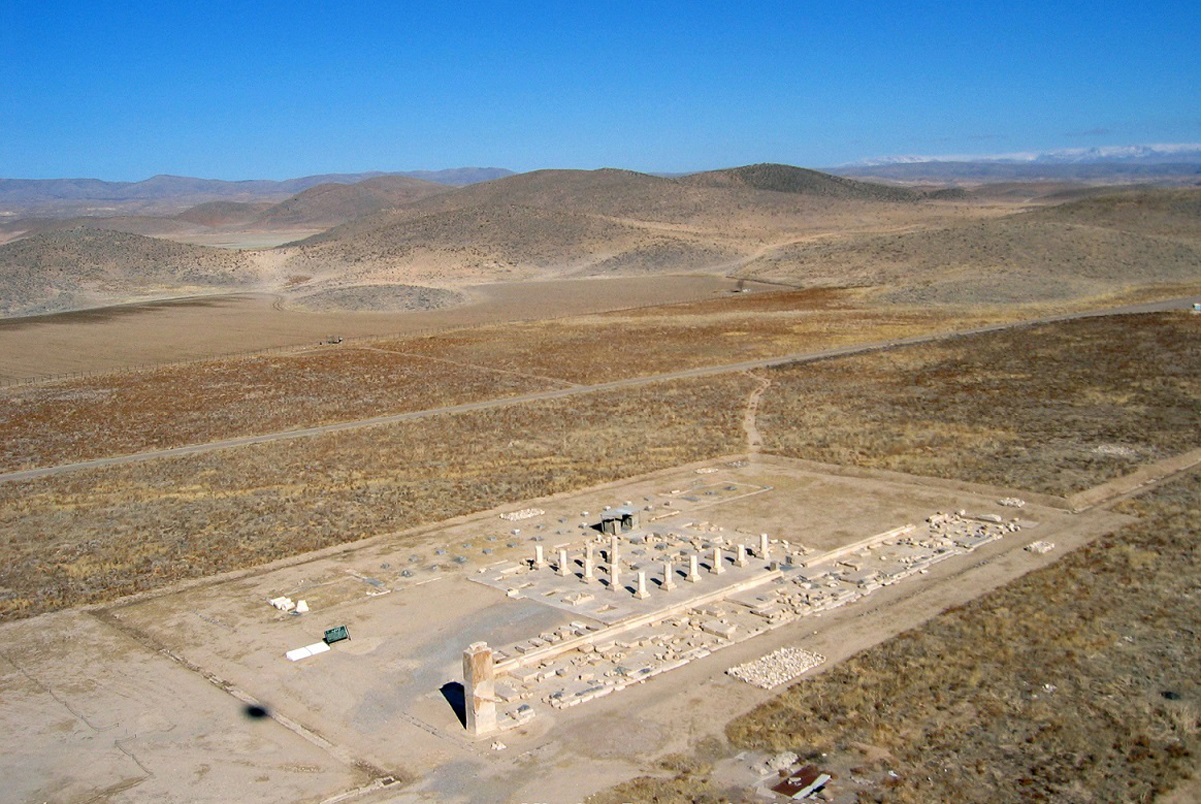Marked for its one surviving column or pier, the Private Palace has a similar plan to that of the Audience Palace with a central columned hall sliced open by stone doorways in all four walls, although just the west and east (the right and left hand) sides were fronted by porticoes. The columns in the hall of the Private Palace, each supported by exceptionally finely-made, horizontally- fluted torus on black and white plinths, are smaller but more numerous than those of the Palace P.
It is worth mentioning that all walls were made of mud-bricks which have been washed away during long years when the palace was abandoned, and what can be seen today is actually a small portion of the original stone structure of the building. The relatively low roof of this hall and a large number of columns, arranged in five rows of six, undoubtedly were composed to create a more intimate environment than that found in the great hall of the Palace S. Fragments of curved, painted plasters in the debris of the palace also suggest that the upper portions of the columns of Palace P were made of plaster covered with wood rather than of stone. The meticulously-paved “throne portico” or “garden portico,” with a dominant view down the center path of a quadratic garden, included a centrally-placed throne-base from which the king could hold court while enjoying the green view of his garden. The doorway reliefs from Palace P are both stylistically and thematically different from those at the rest of the complex. Here, we can imagine a king dressed in a long pleated robe adorned with gold inlays, followed by an attendant. Inscriptions on the pleats of the robe identify the monarch as Cyrus but the style of the pleats can be associated with the reign of Darius, and all contemporary evidences suggest that Darius sought to manifest his connection with the heritage of Cyrus by completing several elements of Cyrus’ unfinished plan of construction, creating these gold-enriched reliefs and inscribing Cyrus’ name, here and elsewhere, in a number of key locations. The stone floor of the palace P, as well as those in the other palaces at the site, lies on another layer of stone foundation where the floor level was removed during the time when the site became deserted.



